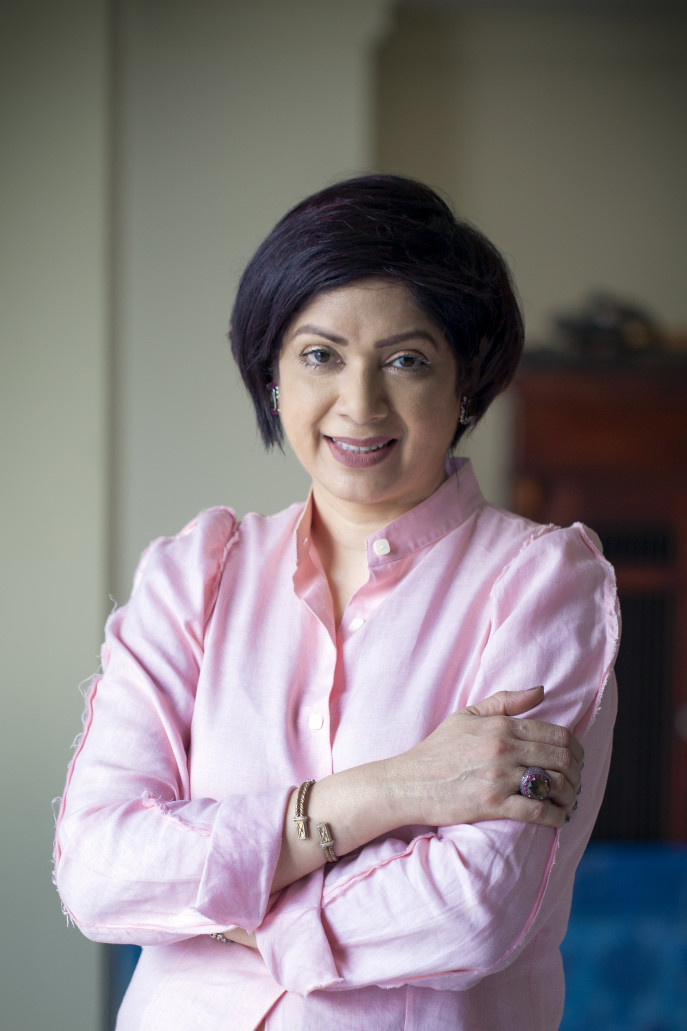In conversation with a pioneer in Bangladesh’s fashion industry Maheen Khan
The Fashion Design Council of Bangladesh (FDCB) has been credited with providing a platform for the best talents in the fashion industry. What makes it unique?
The Fashion Design Council of Bangladesh (FDCB) is a not-for-profit organisation. We are an association comprised of people working in the fashion industry, but the focus is more on the creative aspect instead of the entrepreneurial aspect of the fashion industry. As a platform, we aim to promote our local homegrown designs, heritage and the community of artisans as well as original and creative ideas that are continuously evolving and giving direction to a distinct Bangladeshi signature.

Bangladesh Fashion Week 2023 was designed around the concept, ‘Wear clothes that tell a real story of people and planet.’ Could you please elaborate on the theme?
It means that we are promoting clothes that are associated with the real people who are making these clothes, that is, the local artisans. Not only are these artisans generating income to sustain their livelihoods, but they are also upholding traditions that have been present for hundreds of years. However, these traditions are in danger of being lost and it might be unless new generations of artisans are able to learn this art and skill. In order to do this, we need to innovate traditional designs for retail purposes and make clothes that are relevant and desirable to contemporary audiences. As designers, we need to talk about the stories of the clothes, the people making them, and how these clothes are good for the planet. There is an entire community of people who are involved in making something beautiful, whether it be woven textiles, embroidered textiles, natural dyes, etc, and many different kinds of applications like tye dye. These are all so unique and involve so many different skills. As designers, we need to talk about what goes into making these clothes, help artisans hone their skills, and give them the opportunity to flourish.
We need to make worthwhile products so that when consumers buy them they feel like they are investing in an heirloom, that is, in a piece of clothing that they will cherish for the rest of their lives.
Sustainability and slow fashion are at the heart of this event. Why are sustainable practices in fashion so crucial for our future?
As a developing country, Bangladesh still has a large percentage of people who work in rural areas, particularly in the agricultural sector, which is why we need to focus on sustainable practices and sustainable livelihoods. There are many factors that make products sustainable: it has to be produced in such a way that does not harm the environment, it has to provide fair livelihoods to people and has to conserve the planet’s energy and resources. For clothes, it is uncommon to see sustainable alternatives such as natural dyes being used as they are commercially unviable at a large scale. Add to that, natural dyes cannot provide the brighter colours that are often desired by consumers. But there are other options that contribute to sustainability, such as providing fair wages to artisans and using upcycled or recycled materials.
Not only are these artisans generating income to sustain their livelihoods, but they are also upholding traditions that have been present for hundreds of years. However, these traditions are in danger of being lost and it might be unless new generations of artisans are able to learn this art and skill.
What positive impact do you hope the FDCB will have on the fashion industry?
It is my hope that the work we do through the FDCB will inspire our audience, other designers and the entire fashion industry. Bangladesh is a rich nation of art and culture. Even in our textiles, there are so many kinds of diverse applications. As designers, we need to conduct research and invest our time to come up with ways to promote these traditional textiles and techniques so that they are valued properly. We need to make worthwhile products so that when consumers buy them they feel like they are investing in an heirloom, that is, in a piece of clothing that they will cherish for the rest of their lives.
Mayasir has been the proponent of many fashion trends we see today. What’s next for the veteran brand in Bangladesh’s fashion industry?
Well, I don’t know how much we have been able to influence other designers or fashion houses, but we have always tried to be a champion of handcrafted artisanal work. My personal style has always been making clothes that are artisanal yet contemporary and fun; something that appeals to the younger generation. I participated in NY NOW earlier this year, and have made great contacts and developed a range of products for new buyers. I will be showcasing in Santa Fe, New Mexico in July, where folk textile artistries will be shown from a global perspective. Studio Mayasir hopes to have more shows in Dhaka again this year. We are working towards a fall exhibition and will continue to advocate for local signatures and the advancement of our designs. I am working to develop products that are versatile and will cater to different segments of the luxury market. The kind of work that Bangladesh can produce is very high quality and refined. The artisans are highly skilled, and their skills should be valued, and we need to be in that market to be able to demand that kind of pricing. I have moved away from ready-to-wear and am leaning more towards couture and upscale fashion. That is my vision.
 Maheen Khan
Maheen Khan
Fashion Designer, Founder President of Fashion Design Council of Bangladesh
Owner and Managing Director, Mayasir by Maheen Khan
Photographs: Courtesy of Maheen Khan
